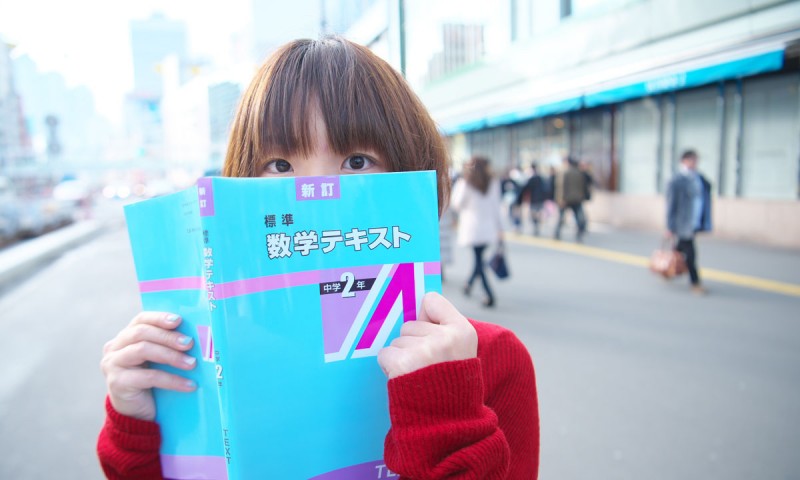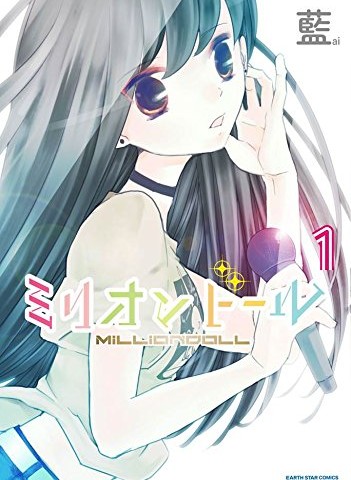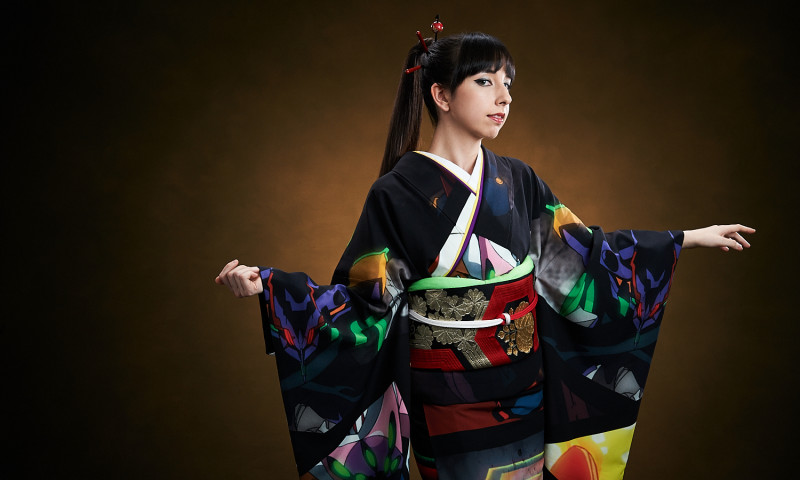
You Can (Not) Redo Getting EVANGELION × Full Graphic Kimono!


美由 / IDOL NEWSING GRAVURE #01_full - IDOL NEWSING http://idolnewsing.com/eventreport/6057
Sponsored Links
There is a word called “subculture”. According to the dictionary Digital Daijisen, it’s explained as, “Against the orthodox or traditional culture of society, a unique culture only belonging to a certain group of people. Like popular culture or youth culture, etc.
サブカルチャー、という言葉がある。デジタル大辞泉では「社会の正統的、伝統的な文化に対し、その社会に属するある特定の集団だけがもつ独特の文化。大衆文化・若者文化など。
Below culture. Sabukaru (for short)”. For example, in other words it is defined by the dictionary as going against high culture (such as academics, literature, classical music, ballet, etc.) or a minor culture that goes against major culture. For the most part this meaning holds true, however recently in Japan, the word “subculture” has begun to change from its generally accepted meaning into one that is somewhat special. According to this author, who was born in the 1980s, from the 80s until the early 00s, I was left with the impression that the most of the world was generally divided at how it regarded otaku culture and subculture. But in current Japan, among things that are considered subculture, even manga, anime, games, etc. are included in what is referred to as “otaku culture”.
下位文化。サブカル」と説明されている。つまり、例えば「ハイカルチャー(学問、文学、クラシック音楽、バレエなど)」に対しての大衆文化、あるいはメジャーカルチャーに対してのマイナーカルチャー、というのが、この言葉の辞書的な意味であるということだ。大まかには間違いはないが、しかし最近、日本において、この「サブカル」という言葉の通俗的な意味が、やや特殊なものに変化して来ている。1980年生まれの筆者にとっては、80年代から00年代初頭辺りまで、オタクカルチャーとサブカルチャーは、世間一般的にはおおよそ分けて捉えられていた、という印象が強い。ところが現在の日本においてサブカルチャーが指すものの中には、マンガ、アニメ、ゲームなど、「オタクカルチャー」と呼ばれているものも含まれている。
Otaku vs. Subculture
オタクVSサブカル
Otaku and Subculture. The roots of both are deeply entwined, and before in the August 2005 Special Issue of art criticism magazine Eureka, a feature titled “Otaku VS Subculture” proved to spark much controversy. Even recently during the speech-sponsored event Sawayaka x Yasumichi Noma x Hiroki Azuma Whether Otaku Criticism Constitutes as Hate or Not- Kancolle, Subculture, Counter that was held this past June, discussions with the theme of otaku and subculture became a widely talked about topic on the internet. With current otaku and subculture, it’s to the extent where one cannot be separated from the other.
オタクとサブカル。--この2つの関係は根深く、かつて芸術評論誌「ユリイカ2005年8月増刊号」(青土社)では「オタクVSサブカル」という特集が組まれ、論争が巻き起こったことがある。また最近でも、今年6月にゲンロン主催イベント「さやわか × 野間易通 × 東浩紀 オタク批判はヘイトなのか ──艦これ、サブカル、カウンター」にてオタクとサブカルをテーマとした討論が行われ、ネットで大きく話題となった。それほどまでに、今なおオタクとサブカルは、切っても切れない関係にあるのだ。
For this article, in order to explore the meaning of Japan’s unique “subculture”, we’ll compare it with otaku culture, and listen and consider what two knowledgeable experts have to say about different themes like, “the meaning of subculture and the change it has undergone”, “the difference between otaku culture and subculture”, and “the current state of otaku and subculture”.
当記事は、日本独特の「サブカル」という言葉の意味を探るため、オタクカルチャーとの対比をしつつ、「サブカルの意味とその変遷」「オタクカルチャーとの差異」「現状のオタクとサブカル」などについて、このテーマに造詣が深い識者2名に話を聞き、考察して行くものだ。
Akio Nakamori, “The Clash Between Otaku and Subculture Since the Beginning of the 90s”
中森明夫「オタクとサブカルとの対立は90年代に入ってから」
First of all, I’d like to consider how these two concepts began to clash in Japan. Akio Nakamura, an idol critc and writer who first coined the term “otaku” analyzes it as, “I first used and coined the word ‘otaku’ in 1983. However, its clash with subculture began from the beginning from the 90s.”
ではまず、日本においてこの2つの概念はどのように対立して行ったのか、考えたい。「オタク」という言葉の生みの親であるアイドル評論家・作家の中森明夫氏は、「言葉としての『オタク』を僕が作ったのは、1983年。が、サブカルとの対立は90年代に入ってからでしょう」と分析する。
“Critics can create context. The context of otaku can be traced back to after the 80s had passed, and from that point onward. The Miyazaki incidents (the serial murders and kidnappings of little girls that occured in Tokyo and Saitama) in 1989 was the turning point. Then all of a sudden as the word “otaku” took on the negative images of “creepy” and “part of a criminal group” it pervaded throughout the world, and became a target. Subculture was different from otaku, and implied culture with a fashionable image. From there until the end of 1991 I was publishing a serial feature article called “Nakamori Bunka Shimbun (Nakamori Culture Newspaper)” in the magazine SPA!, and subsequently launched the first issue of the subculture magazine Quick Japan (Ohta Publishing) that I made with Yuichi Akata. And from there I kept firing off the word “sabukaru” for subculture. I think I was probably one of the first people to use the word “sabukaru”, short for “subculture”, in the media.”
「批評家は文脈を作れるからね。80年代を過ぎ、後になってから、そういう文脈が過去に遡ってまで見出されたんだよ。転機は89年の宮崎事件(東京・埼玉連続幼女誘拐殺人事件)。そこで一気にオタクという言葉が『気持ち悪い』『犯罪者予備軍』といったネガティブなイメージとともに世間に浸透し、バッシングの対象になって行った。サブカルはそんなオタクと違った、オシャレなイメージを持つカルチャーを指していたよね。それから91年末に僕が『中森文化新聞』を連載してた雑誌『SPA!』(扶桑社)で『サブカルチャー最終戦争』っていう特集記事を、のちにサブカル誌『クイックジャパン』(太田出版)を創刊する、赤田祐一と作ったんだよ。そこで僕がサブカルチャーを『サブカル』って言い方で連発してるんだ。おそらく『サブカルチャー』を略した『サブカル』っていう言葉をメジャーな媒体で使ったのって、僕が最初期のひとりじゃないかな」
Subculture is the culture of “finding things which you don’t like, and then after coming to like them, turning that into pleasure”
サブカルチャーは「自分が好きではないものをあえて好きになっていくことを快楽にする」文化
Quick Japan was first published in 1993, and went on to grow and become one of the subculture magazines that represented the 90s. Sayawaka, a writer and critic appearing in the aforementioned talk event, in refering to the subculture at the time, described it like,
『クイックジャパン』は93年に創刊され、90年代を代表するサブカル誌のひとつとして成長を遂げていく。前述のトークイベントにも出演したライター・評論家のさやわか氏は、当時のサブカルチャーが指していたものについて、こう説明する。
“Running parallel with Quick Japan’s era, the presence of Masaaki Aoyama (editor-in-chief of the magazine Abunai 1 Go published by Data House) rose. Such as underground type culture like drag culture and so on, as well as base things like snuff and grotesque movies, or bad taste culture… Culture that was admired like underground theater also existed in the past, but especially from the 90s, subculture was the culture of ‘finding things which you didn’t really like, and then after coming to like them, turning that into pleasure’. And so people who liked subculture came to include otaku-types that watched anime, and from there it became a natural occurence. During that time, because subculture contained an ‘all contents were of equal value’ type of mentality, ultimately it was possible for any genre to be included. Certainly it was this way with the Flipper’s Guitar (debuted in 1989, disbanded in 1991) that was popular in the 90s and the Shibuya-style music of Kenji Ozawa and Keigo Oyamada (CORNELIUS), it wasn’t necessary to make something original, but instead the method of cutting it up and sampling it, etc. or to copying the source of everything, and working it into something else well was also considered a virtue. Or to try and change the kinds of music genres featured on one album, like to dare and adopt something like metal or music that wasn’t popular at the time and try to present it as something cool. For example, Violent Onsen Geisha (noise unit), which was a kind of plus one Koenji and Shinjuku Loft subculture, like a wayside railway of the central line, rathert than Shibuya-style subculture, however its releases were trhough Trattoria. (Trattoria Records, which Oyamada was president of.)
「『クイックジャパン』の時代と並行した流れのひとつに、青山正明(データハウス発刊の雑誌『危ない1号』の編集長)の存在が挙げられます。ドラッグカルチャーなどのアングラカルチャーみたいなもの、それとスナッフムービーやグロ画像などの鬼畜、悪趣味文化など…。アングラ演劇みたいなものを愛でる文化というのは過去にも存在したんですが、とりわけ90年代くらいからの「サブカル」は、『自分が本来好きじゃないものでも”あえて”好きになっていくことを快楽にする文化』なんですよ。だからサブカル好きの人がオタク的なアニメを観るっていうのも、そこからアリになっていく。当時のサブカルは『全てのコンテンツには等しく価値がある』という考え方だから、最終的にはどんなジャンルであってもアリになっちゃうんです。90年代に流行ったthe Flipper’s Guitar(89年デビュー、91年解散のバンド)と、the Flipper’s Guitar解散後の小沢健二と小山田圭吾(CORNELIUS)などの渋谷系の音楽もまさしくそうで、要はオリジナルなものは作れないんだけど、カットアップやサンプリングなど、あらゆるものをコピー元にして、それを上手く組み合わせることで作品を作るという手法も美徳とされる。アルバム1枚ごとにフィーチャーする音楽ジャンルを変えてみたり、メタルとか、当時ダサイとされていた音楽を『あえて取り入れてオシャレに表現してしまうオレカッコイイ』という見せ方。例えば暴力温泉芸者(ノイズユニット)はそれまで渋谷系サブカルというより、高円寺や新宿ロフトプラスワン的な中央線沿線系サブカルでしたが、トラットリア(Trattoria Records。小山田が主宰するレコードレーベル)から盤を出していました。渋谷系も中央線沿線系も根底ではサブカルとしては同じもので、趣味の違いでしかなく、どっちが上とかではないですけど、オシャレなレーベルだと思われていたトラットリアがそれをあえてリリースすることがカッコいいという価値観だったわけですね」
The 80s was a period where consumers could produce new content, of which Comiket is the best example
80年代は消費者がコンテンツを生産できるようになった時代。コミケはその最たる例
The 90s embodied the clash between otaku and subculture. However, it’s said to have happened precisely because of how well they both took off. Mr. Nakamori described the reason why and its historical background as,
オタクとサブカルの対立が具体化して行った90年代。しかしそれは、この2つのカルチャーが盛り上がって行ったからこそだと言える。中森氏はその理由を、時代背景とともにこう説明する。
“Simply put, making it through the 60s post war reconstruction period and the oil shock period of the 70s, and entering the 80s, where an increasing number of people were engaged in the tertiary industries and were part of a consumerist society, became a major factor for the existence of otaku and subculture. In other words, it’s the prosperity of the advertising and media culture. If you follow the historical background a little further, one aspect of younger culture in the 70s that set the foundation for the 80s, was the presence of late night radio. Because of popular personalities such as Takuro Yoshida, Shinji Tanimura of Alice, and folk song singer Kotaro Yamamoto, a network of amateur listener hagaki shokunin (radio personalities who wrote or drew on large signboards) was created. Furthermore, Yoshio Hayashi (TBS announcer) from Pack In Music (TBS Radio) had been working with Yumi Arai (singer songwriter who debuted in 1972) before her big break as Yuming (Yumi Matsutoya), RC Succession (Kiyoshiro Imawano’s band that debuted in 1969), and Tatsuro Yamashita (who made his solo debut as a singer songwriter in 1975), and his work can only be described as subculture. At the same time, the subculture magazines Bikkuri House (Parco Publishing) and Takarajima (Takarajima Company) as well as the total journal magazine Pump became popular, and that younger people came to read magazines with small circulation or little magazines and not just “feature stories” and so on by major publishers was something big. Based on that, the consumerist society of the 80s arrived and Japan experienced wealth all over, and moreover, through the evolution of technology such as copy machines, FAX machines, and VCRs, consumers were then well-equipped to become producers. To summarize, new content was now made from amateur consumers. Comiket (Comic Market), the world’s largest convention for the sale of doujinshi, is the best example. That’s because it was like a second creation festival by consumers who liked anime and manga. The hit television anime Neon Genesis Evangelion (broadcast in 1995 and 1996 by TV Tokyo) by Hideaki Anno and other anime otaku like him at GAINAX, is symbolic of this.
「簡単に言うと、戦後復興の60年代、オイルショックの70年代を超えて80年代に入ったときに第三次産業に従事する人が増えて消費社会に入ったことが、オタク&サブカルチャーが存立した大きな条件となった。つまり広告業とメディア文化の隆盛だよね。もう少し詳しく時代背景を辿ると、80年代を準備した70年代の若者の文化のひとつに、深夜ラジオの存在が挙げられる。吉田拓郎、アリスの谷村新司、山本コータローといったフォークソング歌手のパーソナリティーが人気で、素人のリスナーであるハガキ職人たちとのネットワークを作っていた。さらに『パックインミュージック』(TBSラジオ)の林美雄(TBSアナウンサー)はブレイク前のユーミンこと荒井由実(72年デビューのシンガーソングライター)、RCサクセション(69年デビューの忌野清志郎によるバンド)、山下達郎(75年にソロデビューしたシンガーソングライター)とかをジャンジャン掛けたり、サブカルとしか言いようのない仕事をしていた。それと、『ビックリハウス』(パルコ出版)や『宝島』(宝島社)といったサブカル雑誌や、全面投稿雑誌『ポンプ』が流行ったり、『話の特集』などの大手出版社によるものではないミニコミやリトルマガジンを若者が読むようになったことも大きい。そうした下地がある上で、80年代の消費社会が到来して日本全体が裕福になり、かつテクノロジーの進化によりコピー機やFAXやビデオデッキなどが普及して、消費者が生産者にもなれる状況が整ったんだよね。つまり、消費者でしかなかった素人がコンテンツを生産できるようになった。コミケ(コミックマーケット。世界最大規模の同人誌即売会)がその最たる例だよね。あれはマンガやアニメなどの消費者たちによる二次創作のお祭りなわけだから。庵野秀明らアニメオタクたちによるGAINAXが、テレビアニメ『新世紀エヴァンゲリオン』(95、96年放送。テレビ東京)を作りヒットさせたのも、象徴的だよね」
To be continued in Part 2
後編へ続く
Akio Nakamori
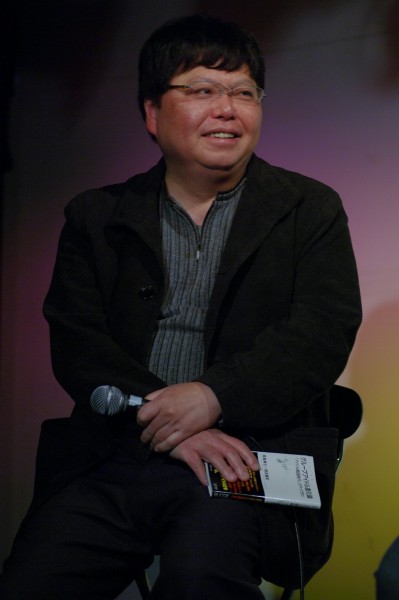
Writer and idol critic. Born in Mie prefecture. Started working in a variety of media from the 1980s. His literary works include Idol Nippon, Tokyo Tongari Kids, Gozen 32ji no Nonen Rena”, the co-authored AKB48 Hakunetsu Ronsou, and others. His novel Anarchy in the JP was nominated for the Yukio Mishima Prize.
https://twitter.com/a_i_jp
中森明夫(なかもり・あきお)
作家/アイドル評論家。三重県生まれ。1980年代から多彩なメディアで活動する。著書に『アイドルにっぽん』『東京トンガリキッズ』『午前32時の能年玲奈』、共著に『AKB48白熱論争』等。小説『アナーキー・イン・ザ・JP』が三島由紀夫賞候補となる。
https://twitter.com/a_i_jp
Sayawaka
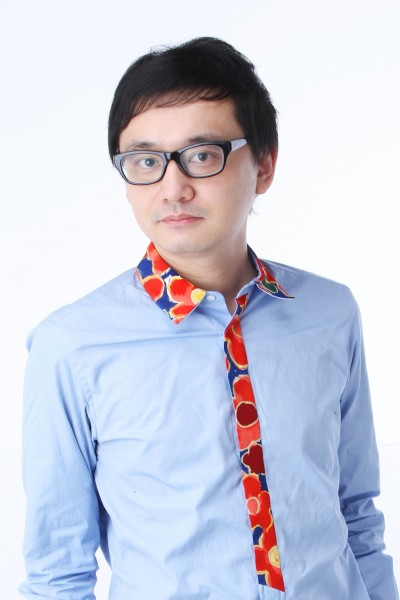
Writer, critic
Born in Hokkaido in 1974. After graduating from college and later gaining experience working in the music and publishing industries, he started his career as a writer. From 2007 he has written many critiques which have transversed a wide range of cultural genres and have appeared in Eureka, Quick Japan, The Asahi Shimbun, etc. In 2012 he published his first book, Bokutachi no Game Shi (Sekaisha Shinsho), and his presentation of the 30 year history of computer games from his own original context was highly praised. With his work AKB Shoho to wa Nan datta no ka (Taisho Tosho) in 2013, he designed a new idol formula through chart analysis and an overabundance of affection. According to younger people who were touched by the pop culture transformation from the new millenium, this work is the first comprehensive modern culture theory of its kind.
https://twitter.com/someru
さやわか
ライター、評論家。
1974年北海道生まれ。大学卒業後、音楽業界・出版業界での会社勤務を経験したのち、ライターとして執筆活動を開始。07年以降は『ユリイカ』『クイック・ジャパン』『朝日新聞』などを舞台に、幅広い文化ジャンルについて横断的に評論を行う。12年、初の単著『僕たちのゲーム史』(星海社新書)を上梓、独自の文脈でコンピューターゲームの30年史を提示し絶賛を浴びる。13年の『AKB商法とは何だったのか』(大洋図書)では、チャート分析とあり余る愛情で新たなアイドル論をうち立てた。本書はゼロ年代以降のポップカルチャーの変容を肌身で感じてきた著者による、初めての総合的な現代文化論である。
https://twitter.com/someru
Shinshi Okajima
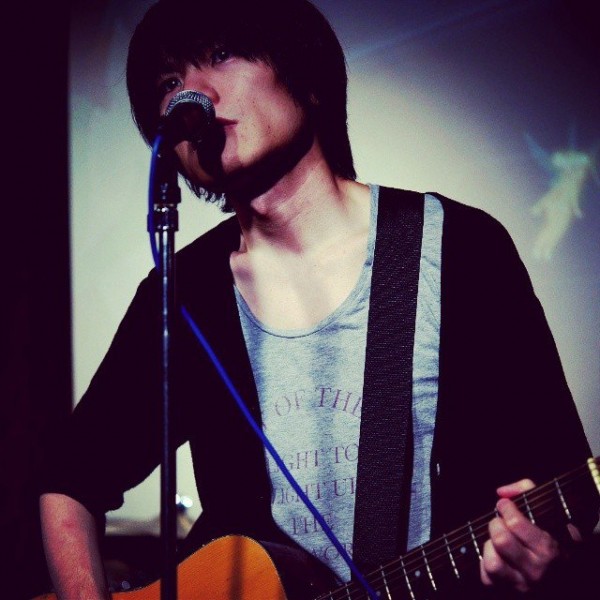
Born in 1980. Professional idol writer. His works include the co-authored Group Idol Shinka Ron, AKB48 Saikyo Kousatsu, Idol 10 Nen Shi, Idol Gakkyoku Disc Guide, and others. He was an advisor of the Saitama prefecture-sponsored Media/Idol Museum, and was head of all nine programs during the exhibition period and event MC. He has worked on the production and management of idol culture web site and DVD magazine, IDOL NEWSING.
https://twitter.com/ok_jm
http://idolnewsing.com/
岡島紳士(おかじま・しんし)
1980年生まれ。アイドル専門ライター。著書、共著に「グループアイドル進化論」「AKB48最強考察」「アイドル10年史」「アイドル楽曲ディスクガイド」など。埼玉県主催「メディア/アイドルミュージアム」のアドバイザーと、会期中に行われた全9回の番組&イベントMCを担当。アイドルカルチャーサイト&DVDマガジン「IDOL NEWSING(アイドルニューシング)」の制作・運営を手掛けている。
https://twitter.com/ok_jm
http://idolnewsing.com/
The cover picture
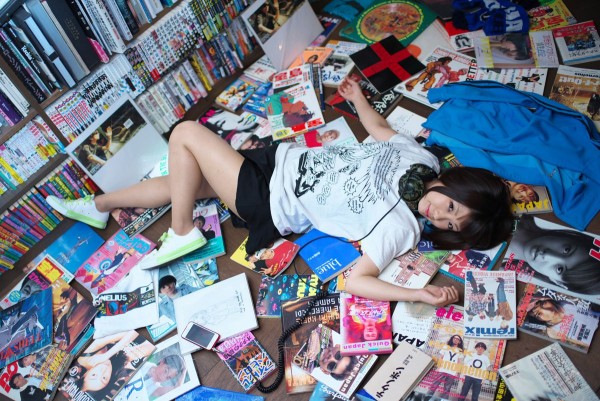
美由 (Miyu) / IDOL NEWSING GRAVURE #01_full -IDOL NEWSING http://idolnewsing.com/eventreport/6057
Translated by Jami Koide
Sponsored Links
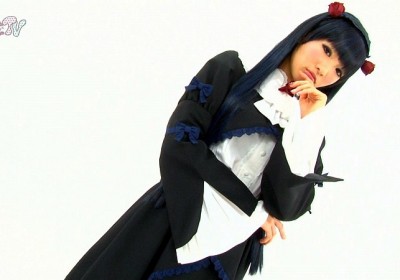
[Exclusive Program] Tokyo GIrls’ Update TV #006 : SBY in Shibuya109 & Pikarin’s Cosplay

The 3rd “Underwater Knee-High Girls” to Be Published as “Suichu Niso Cube” Showing Girls’ Relationships


